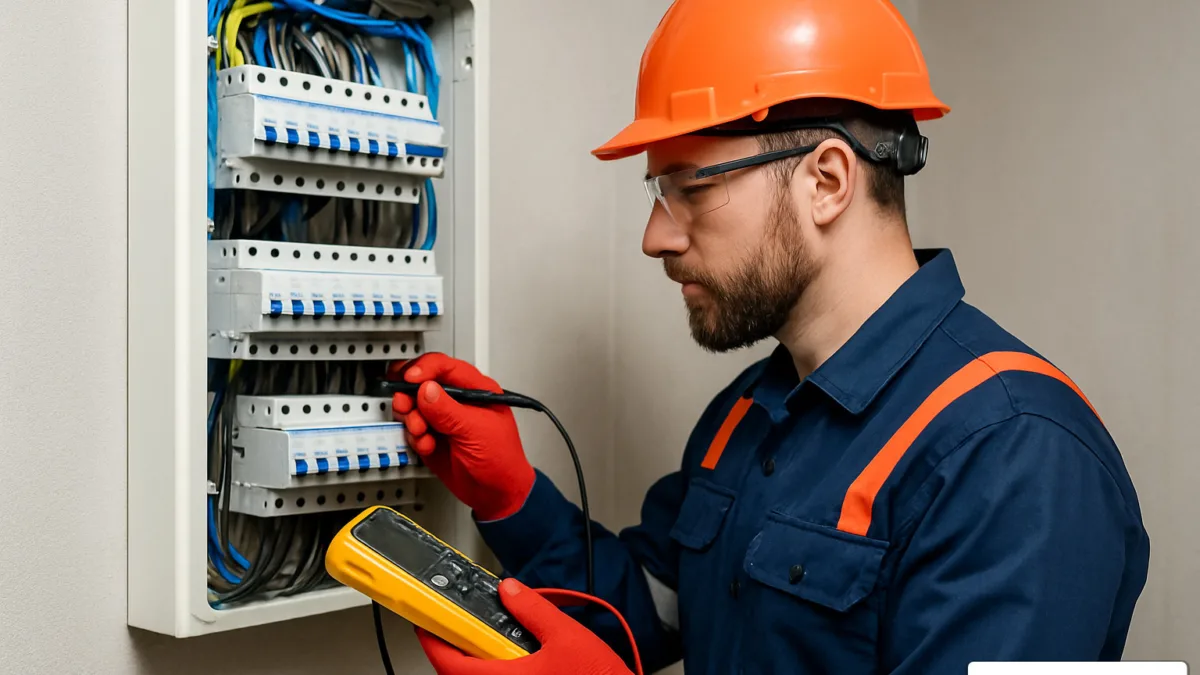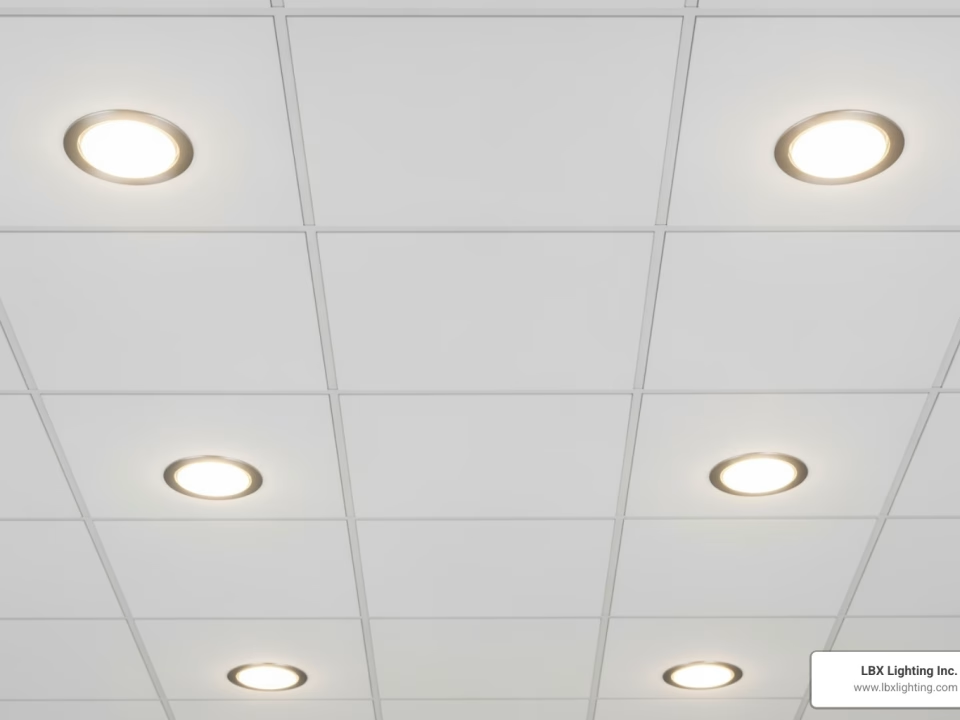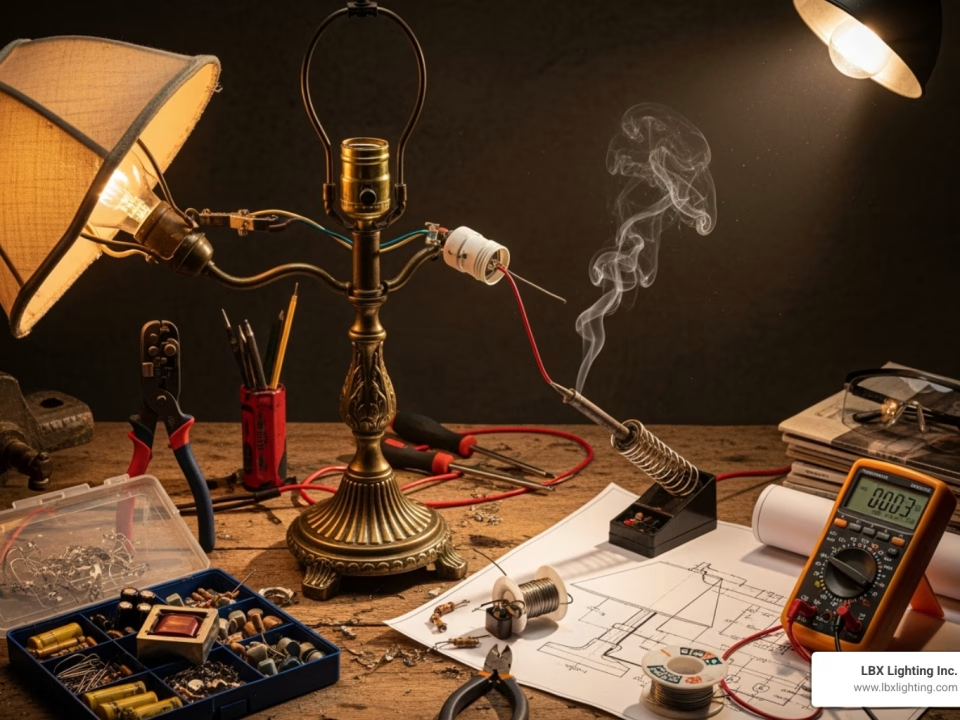
Hang in Style with These Vintage Crystal Lamps
June 20, 2025
A Comprehensive Guide to the Best Recessed Lighting Solutions
June 24, 2025Why 2391 Inspection and Testing Is Your Gateway to Electrical Career Success
2391 inspection and testing qualifications are the gold standard for electricians who want to legally inspect and certify electrical installations in jurisdictions that operate under BS 7671 wiring regulations. This City & Guilds Level 3 award proves your competence to carry out both initial verification of new installations and periodic inspection reports – essential skills that open doors to higher-paying roles and professional recognition.
Quick Answer for 2391 Inspection and Testing:
- What it is: City & Guilds Level 3 Award in Inspection & Testing of Electrical Installations
- Three pathways: 2391-50 (Initial only), 2391-51 (Periodic only), 2391-52 (Combined – most popular)
- Duration: 50 guided learning hours for combined qualification
- Cost range: £750-£1,125 depending on provider and location
- Assessment: Online multiple-choice test + practical assignment
- Entry requirements: 18+ years old, Level 3 electrical qualification, site experience
- Career benefits: Competent Person Scheme registration, JIB grading upgrade, landlord EICR work
The industry has been “crying out for a simpler more effective qualification to cover inspection and testing” according to training providers, and the updated 2391-52 combined award delivers exactly that. With landlord periodic inspection reports becoming legally mandatory in many markets from July 2020, demand for qualified electricians has never been higher.
Yet the national pass rate for the older 2391-10 qualification was just 32% – highlighting why choosing the right training provider and preparation strategy is crucial for success.
I’m Michael Eftekhar, and with over 30 years serving Houston’s lighting industry at LBX Lighting, I understand the critical importance of proper electrical inspection and testing for both safety and compliance. While my expertise centers on commercial and residential lighting solutions, I recognize that 2391 inspection and testing certification is fundamental to ensuring electrical installations meet the highest standards.
What Is the City & Guilds 2391 Inspection and Testing Qualification?
The City & Guilds 2391 inspection and testing qualification is your professional passport to legally inspecting and certifying electrical installations in any region that adopts BS 7671:2018 Amendment 2 – the current 18th Edition Wiring Regulations.
The qualification has evolved significantly. The original 2391-10 course earned a reputation as “one of the most difficult qualifications in the industry” with only 32% of candidates passing on their first attempt. City & Guilds listened to industry feedback and created updated awards that maintain rigorous professional standards while being more accessible to working electricians.
When you successfully complete your 2391 inspection and testing course, you’ll receive a modern digital credential and be qualified to carry out initial verification of new installations, complete periodic inspection reports for existing systems, and handle the certification paperwork that makes your work legally valid.
The career opportunities are substantial. You can register with Competent Person Scheme providers, take on the growing market of landlord compliance work, and position yourself for higher JIB grading. With rental property electrical inspections becoming legally mandatory from July 2020 in several regions, qualified electricians are in high demand.
Core Skills You’ll Master
The 2391 inspection and testing course builds your expertise across six critical areas:
Safe isolation – You’ll learn to establish bulletproof safe systems of work, following HSE guidance to properly isolate electrical installations before testing starts.
Test instrument calibration – Ensures your equipment gives reliable results every time. You’ll understand calibration periods, source checks, and maintaining accuracy that makes your test results legally defensible.
Initial verification – Commission new electrical installations like a pro, ensuring systems meet design specifications before they’re energized for the first time.
Periodic inspection – Assess existing installations that have been in service, developing detective skills to spot deterioration, damage, or non-compliance that may have developed over time.
Certification paperwork – Master inspection schedules, test result sheets, and condition reports – the documentation that proves you’ve done your job properly and protects both you and your clients.
Fault diagnosis – Develop your ability to interpret test results, identify potential problems, and make informed recommendations about what needs fixing or further investigation.
Initial vs Periodic – The Big Difference in 2391 Inspection and Testing
Initial verification is all about new electrical work. Whether it’s a brand-new build, complete rewire, or major alterations, you’re the final quality check before the system goes live. You have access to design documentation and installation records.
Periodic inspection is detective work. You’re examining installations that have been in service for years, looking for signs of wear, damage, or compliance issues. You often have limited information about how the installation was originally designed.
This work has become increasingly important since July 1, 2020, when private-rental regulations introduced mandatory electrical safety inspections in a growing number of jurisdictions.
| Aspect | Initial Verification | Periodic Inspection |
|---|---|---|
| When performed | During/after new installation | On existing installations in service |
| Documentation available | Full design specs and records | Limited historical information |
| Primary focus | Compliance with design | Condition and continued safety |
| Common drivers | New builds, major alterations | Landlord requirements, insurance |
| Typical frequency | One-time after installation | Every 5-10 years depending on use |
| Standards applied | Current BS 7671 at time of install | Current BS 7671 with consideration for age |
The beauty of the combined 2391-52 qualification is that it prepares you for both scenarios, making you a more versatile and valuable professional in today’s electrical market.
Choosing the Right 2391 Pathway (2391-50, 2391-51, 2391-52)
The current 2391 inspection and testing qualification structure offers three distinct pathways, each designed to meet different learner needs and career objectives. Understanding these options is crucial for making the right investment in your professional development.
The pathway system replaced the older 2391-10 qualification with a more flexible approach. Each pathway has specific Guided Learning Hours (GLH) and Total Qualification Time (TQT) requirements, reflecting the depth of content covered.
Guided Learning Hours represent the time when a tutor is present to give specific guidance, whether in person or through structured online activities. Total Qualification Time includes GLH plus additional time for independent study, assessment, and practical application.
All three pathways require candidates to be 18 or older and hold a relevant Level 3 electrotechnical qualification with sufficient industry experience. The qualification fees range from £82.30 for single-unit awards to £139.40 for the combined qualification (these are the fees training centers pay to City & Guilds – your course cost will be higher).
For up-to-date information on regional accreditation and funding options, consult the QiW website and your local training provider.
2391-50: Initial Verification Only
The 2391-50 pathway focuses exclusively on initial verification and certification of electrical installations. This single-unit award requires 41 Guided Learning Hours and has a Total Qualification Time of 55 hours.
This pathway suits electricians who primarily work on new installations, major alterations, or commercial projects where initial commissioning is the main requirement. If your work involves mainly new-build housing, industrial installations, or you’re part of a team that specializes in installation rather than maintenance, this focused approach might be ideal.
The assessment combines an open-book theory test with a practical assignment. The open-book format allows you to reference the Wiring Regulations and other approved documents during the exam, reflecting real-world working conditions where these resources are always available.
Training providers typically offer this as a 4-day course, with hands-on practical skills development and theory assessment completed within a fixed timeframe. The course fee generally ranges from £800-£960 including VAT.
2391-51: Periodic Inspection & Testing Only
The 2391-51 pathway concentrates on periodic inspection and testing of existing installations. Like the 2391-50, this is a single-unit award with 41 GLH and 55 hours TQT.
This route appeals to electricians whose work centers on maintenance, condition reporting, or compliance inspections. With the legal requirement for landlord EICRs and increasing focus on electrical safety in existing buildings, there’s strong demand for these specialized skills.
The periodic inspection pathway emphasizes risk assessment, condition evaluation, and the interpretation of test results on aging installations. You’ll develop expertise in identifying deterioration patterns, understanding how installations degrade over time, and making informed judgments about continued safe operation.
This pathway is particularly valuable for electricians working in property maintenance, facilities management, or those establishing businesses focused on electrical condition reporting and compliance services.
2391-52: Combined Initial & Periodic (Most Popular) – the flagship 2391 Inspection and Testing option
The 2391-52 combined award represents the most comprehensive 2391 inspection and testing option and has become the most popular choice among electricians. This pathway covers both initial verification and periodic inspection within a single qualification.
With 50 Guided Learning Hours and 67 hours Total Qualification Time, the 2391-52 provides complete coverage of inspection and testing competencies. The assessment structure includes a 60-question online multiple-choice test lasting 2 hours, plus practical assignments covering both initial and periodic scenarios.
The combined approach offers several compelling advantages. First, it’s more cost-effective than taking separate qualifications – you save both time and money while gaining broader competencies. Second, it provides maximum flexibility in your career, enabling you to work across both new installation and maintenance sectors.
Training providers typically structure this as a 6.5-day program (5 days training plus 1.5 days assessment) with 2 days of mandatory e-learning completed before attending the center. Course fees range from £750-£1,125 including VAT, representing excellent value for the comprehensive coverage.
The 2391-52 has become the industry standard because it reflects the reality of electrical work – most electricians encounter both new installations and existing systems requiring inspection. Having both competencies makes you more versatile and employable.
How to Pass Your 2391 Inspection and Testing Course First Time
Success in 2391 inspection and testing requires strategic preparation and understanding of the assessment structure. With the national pass rate for the previous 2391-10 qualification sitting at just 32%, while some training providers achieved over 80%, your choice of preparation approach significantly impacts your chances of success.
The current assessment structure combines theoretical knowledge with practical competence. The online multiple-choice test typically contains 60 questions with a 2-hour time limit, while the practical assignment runs for approximately 2.5 hours and tests your hands-on skills in a closed-book environment.
Understanding the Assessment Weightings helps you focus your study time effectively. Learning Outcome 4 (practical testing procedures) carries 56% of the assessment weight, while Learning Outcome 1 (legislation and standards) accounts for 22%. This emphasizes the importance of hands-on competence.
Practice with Real Equipment is essential for practical success. The assessment uses industry-standard multifunction testers and requires you to perform actual tests on practice rigs. Familiarize yourself with different makes and models of test equipment.
Master the Documentation requirements thoroughly. A significant number of candidates fail due to incomplete or incorrect paperwork rather than technical incompetence. Practice completing inspection schedules, test certificates, and condition reports until the process becomes automatic.
Time Management during assessments requires careful planning. The practical assessment allows limited time for multiple test procedures, so develop efficient routines for equipment setup, testing sequences, and result recording.
Must-Have Resources for 2391 Inspection and Testing Success
Your success in 2391 inspection and testing depends heavily on having the right reference materials:
IET Wiring Regulations BS 7671:2018+A2:2022 forms the foundation of all electrical work in the UK. This is your primary tool during open-book assessments. Invest in a genuine copy and learn to steer it quickly.
IET Guidance Note 3: Inspection & Testing provides detailed practical guidance on test procedures, instrument requirements, and result interpretation. This bridges the gap between regulations and real-world application.
IET On-Site Guide offers a condensed, practical reference that’s easier to steer during time-pressured assessments. While not as comprehensive as the full Wiring Regulations, it covers the most commonly needed information.
E-learning Resources can significantly improve your preparation. Many training providers offer free trials of their online testing procedures courses.
For comprehensive lighting solutions and expert guidance on electrical installations, explore our lighting tips resource, where we share decades of experience in ensuring electrical systems meet the highest standards.
Common Pitfalls & Expert Hacks
Learning from others’ mistakes can save you from costly failures:
Documentation Errors account for many assessment failures. Missing signatures, incorrect circuit references, or incomplete test result entries can fail an otherwise technically competent candidate. Create a mental checklist for paperwork completion.
Ze vs Zs Confusion trips up many candidates during earth fault loop impedance testing. Ze is the external earth fault loop impedance (measured at the origin with main bonding disconnected), while Zs is the total earth fault loop impedance measured at circuit endpoints.
Ring Final Circuit Continuity testing requires a specific sequence. The correct procedure involves cross-connecting line and neutral conductors at the distribution board, then measuring between line and neutral at each socket outlet.
RCD Testing Procedures often cause confusion around ramp testing and timing requirements. RCDs must disconnect within specified time limits at different test currents, and the ramp test determines the actual trip current.
Memory Aids can help during high-pressure assessments. Develop mnemonics for test sequences, maximum Zs values for common protective devices, and required information for different certificate types.
Top Training Providers & Course Costs Round-Up 2024
Finding the right training provider for your 2391 inspection and testing qualification has become more straightforward thanks to standardized course structures adopted by most City & Guilds–approved centers. This consistency makes it easier to compare options and choose the provider that best fits your schedule and learning style.
Course length has become fairly standardized. The popular 2391-52 combined qualification typically runs for 6.5 days total – 5 days of intensive face-to-face training followed by 1.5 days dedicated to assessment. Most centers now require 2 days of mandatory e-learning before attending the training facility.
This blended learning approach has become the industry standard. You work through theoretical foundations at your own pace from home, then arrive at the training center ready to focus on hands-on practical skills. The online components often remain accessible after course completion.
Most providers include assessment costs in their course fees. You don’t need to worry about booking separate exam slots or paying additional fees – the online multiple-choice test is scheduled during your course week, and practical assessments happen at the training center using professional-grade equipment.
Skills Bootcamp funding is now available for eligible learners. These government-funded programs can make your 2391 inspection and testing training completely free. The eligibility criteria are straightforward – you need to be 19 or older with the right to work and meet basic residency requirements.
Typical fees range from £750 to £1,125 including VAT for most providers. This covers everything – materials, assessment, and certification. The variation usually reflects facility quality, class size, and additional learner support services.
For training centers looking to register candidates and access resources, the Walled Garden portal provides essential administrative tools, though some documents may be password protected.
Funding & Employer Support Options for 2391 Inspection and Testing
Training costs can feel like a significant investment, but there are more funding options available for 2391 inspection and testing training than many electricians realize.
Skills Bootcamp Programs represent the gold standard of funding support. These programs can cover your entire course cost, including books and materials. They’re designed to help workers develop in-demand skills quickly.
If your employer pays into an industry training levy, you might be eligible for substantial funding support. Many electricians don’t realize their company contributes to dedicated funds specifically set up to support skills development within the construction and building services sector.
Employer sponsorship remains surprisingly common in the electrical industry. Forward-thinking employers recognize that 2391 inspection and testing qualifications open up new business opportunities and improve client service capabilities.
For those funding their own training, pay-as-you-train schemes can make the investment more manageable. Some providers offer 0% interest financing for qualified candidates.
Regional pricing varies – metropolitan areas typically command the highest fees, while smaller towns and rural regions often offer better value. Always balance course cost against travel, accommodation, and time away from work.
Career Progression After 2391 Inspection and Testing
Completing your 2391 inspection and testing qualification opens career opportunities that significantly transform both your earning potential and job satisfaction.
Competent Person Scheme registration becomes possible after qualification. You can now self-certify certain types of electrical work, which dramatically improves your value to clients and employers. This capability is particularly valuable for domestic and small commercial work.
Within larger companies, Qualified Supervisor (QS) status through the JIB grading structure often requires 2391 inspection and testing competence. This typically brings substantial pay increases and improved job security.
The qualification also serves as a stepping stone to Level 4 Design and Verification qualifications. These advanced credentials open pathways into electrical design roles and project management positions.
EV charging installation capabilities have become increasingly valuable, and many training providers now offer combined packages that include both 2391 inspection and testing and EV charging qualifications.
Perhaps most exciting are the business development opportunities that multiply after qualification. Many electricians use their 2391 inspection and testing credentials to establish specialized services focusing on landlord compliance, insurance inspections, or electrical condition reporting. The recurring nature of periodic inspection work can provide excellent business stability.
The qualification essentially transforms you from someone who installs electrical systems to someone who can verify, certify, and take professional responsibility for electrical safety.
Frequently Asked Questions about 2391 Inspection and Testing
What are the entry requirements?
2391 inspection and testing qualifications require candidates to be 18 or older and hold a relevant Level 3 electrotechnical qualification with sufficient industry experience. Most providers expect at least six months of practical inspection and testing experience, plus familiarity with both single-phase and three-phase electrical systems.
You must also hold a valid ECS (Electrotechnical Certification Scheme) card, and completion of the 18th Edition Wiring Regulations course (BS 7671:2018+A2:2022) is typically required before starting 2391 training.
How are the exams assessed?
The assessment structure combines multiple methods to ensure comprehensive competence evaluation. The online multiple-choice test contains 60 questions with a 2-hour time limit and is conducted in open-book format, allowing access to approved reference materials.
A written assignment completed during the course demonstrates your understanding of inspection and testing procedures and documentation requirements. The practical assessment runs for approximately 2.5 hours and is conducted in closed-book conditions, requiring you to perform actual tests on practice rigs using industry-standard equipment.
The pass mark for multiple-choice tests is typically set around 75%, adjusted for cohort consistency to maintain standards across different assessment periods.
Does 18th Edition need to be completed first?
Yes, completion of the 18th Edition Wiring Regulations course (BS 7671:2018+A2:2022) is a prerequisite for 2391 inspection and testing training. This requirement ensures all candidates have current knowledge of electrical installation standards before learning inspection and testing procedures.
The 18th Edition qualification demonstrates your understanding of the regulatory framework that underpins all inspection and testing work. Without this foundation, you cannot properly interpret test results or make informed judgments about installation compliance.
Most training providers will verify your 18th Edition certification before allowing enrollment in 2391 inspection and testing courses, so ensure your qualification is current and recognized.
Conclusion & Next Steps
2391 inspection and testing qualification represents a pivotal investment in your electrical career, opening doors to higher-paying roles, professional recognition, and business opportunities that weren’t previously accessible. With landlord EICR requirements driving unprecedented demand for qualified inspectors and the combined 2391-52 pathway offering comprehensive competence in a single qualification, there’s never been a better time to upskill.
The key to success lies in choosing the right training approach, dedicating adequate time to preparation, and understanding that this qualification is about more than passing an exam – it’s about developing the competence to ensure electrical installations are safe, compliant, and properly documented.
At LBX Lighting Inc., we’ve spent over three decades ensuring our Houston clients receive the highest quality electrical installations and lighting solutions. While our expertise focuses on commercial and residential lighting systems, we understand that proper inspection and testing forms the foundation of all electrical safety. The principles of thorough inspection, accurate testing, and meticulous documentation that underpin the 2391 inspection and testing qualification align perfectly with our commitment to excellence in electrical installations.
Whether you’re an established electrician looking to expand your capabilities or someone seeking to specialize in inspection and testing work, the 2391 qualification provides the credentials and competence needed for professional advancement. The investment in training typically pays for itself within months through increased earning potential and expanded service offerings.
Take the next step in your electrical career by researching training providers, understanding funding options, and preparing for this challenging but rewarding qualification. Your future clients – and your bank account – will thank you for making this professional commitment to excellence.
For comprehensive electrical solutions and expert guidance on commercial installations, explore our commercial lighting solutions where we apply the same rigorous standards that make 2391 inspection and testing such a valuable qualification in today’s electrical industry.
The electrical industry needs qualified, competent professionals who can ensure installations meet the highest safety standards. By pursuing 2391 inspection and testing certification, you’re not just advancing your career – you’re contributing to electrical safety and professional standards that protect lives and property. Make the investment in your professional future today.









